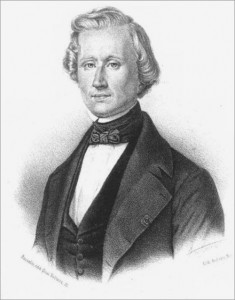Vulcan was a planet that nineteenth century scientists believed to exist somewhere between Mercury and the Sun. The mathematician Urbain Jean Joseph Le Verrier first proposed its existence after he and many other scientists were unable to explain certain peculiarities about Mercury’s orbit. Scientists like Le Verrier argued that this had to be caused by some object, like a small planet or moon, acting as a gravitational force. La Verrier called his hypothetical planet Vulcan, after the Roman god of fire. Soon, amateur astronomers around Europe, eager to be a part of a scientific discovery, contacted Le Verrier and claimed to have witnessed the mysterious planet making its transit around the Sun. For years afterward, Vulcan sightings continued to pour in from around the globe, and when La Verrier died in 1877, he was still regarded as having discovered a new planet in the solar system.
How it was Proven Wrong:
Without La Verrier acting as a cheerleader for Vulcan’s existence, it suddenly began to be doubted by many notable astronomers. The search was effectively abandoned in 1915, after Einstein’s theory of general relativity helped to explain once and for all why Mercury orbited the Sun in such a strange fashion. But amateur stargazers continued the search, and as recently as 1970 there have been people who have claimed to see a strange object orbiting the sun beyond Mercury. Amusingly, the entire would-be discovery’s greatest legacy today is that it inspired the name of the home planet of the character Spock from Star Trek.

No comments:
Post a Comment